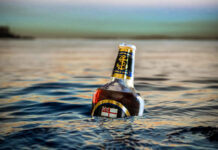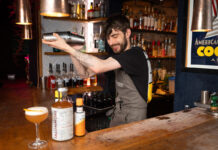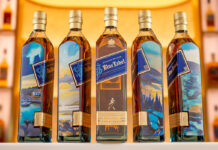Ignore category at your own peril, say drinks firms

[box style=”0″]
Top tips to raise low & no sales
Offer a breadth of beers with ABVs from 0% to 3.5%, as well as a range of styles.
– Genius Brewing.
Deliver non-alcoholic drinks that replicate cocktails; use the correct glassware and garnish.
– Stryyk.
Have a dedicated low and no section on your menu; not mocktails or ‘virgin cocktails’.
– Stryyk.
[/box]
IN 2018, it’s fair to say low and no-alcohol is a category in its own right. Recent CGA figures revealed low and no-alcohol beer alone accounted for £2.65 million of sales in Scotland’s pubs and bars in the last year, highlighting the opportunity available to operators.
But what factors are behind this sea-change in consumer attitude towards the lower ABV market?
Health is one of the main driving forces, according to Anthony Clarey, on-trade sales director at Kopparberg, who warned it is “not a movement to be ignored”.
“The wellness agenda and mindful drinking is increasingly influencing consumers’ drinking behaviours – and driving the growth of the alcohol-free category,” he said.
Martyn Railton, managing director of specialist beer importer, Euroboozer, agreed.
He said: “I think the category has become relevant on the back of consumers becoming more health conscious, especially the younger generation.”
Railton added that, to an extent, the rise of the low and no-alcohol category is somewhat of a self-fulfilling prophecy – with the growth in options available to customers itself “a big factor in 2018”.
This was echoed by Stephan Kofler of German brewer Krombacher, which produces a no-alcohol beer.
“The low-alcohol category is booming, with interest, innovation and investment on the up,” he said.
“Consumers have never before had the choice or quality on offer they now have, which has made the category credible and exciting.
“Low-alcohol beers couldn’t be spoken of without a joke in the past, whereas now there are low and no beers that can not only stand alongside many full-strength beers – but can actually outshine many.”
Kofler added that the category “is now incredibly competitive, with a wide range of brands, countries of origin and styles available”.
“This competition has meant standards have been raised around the world, with taste quality now of paramount importance,” he said.
“This is good for the category, the [licensee], and great for the consumer looking for a low-alcohol, high quality brew.”
As ranges of low and no-alcohol products rise, so too do customer expectations, meaning operators must ensure they stock the right products.
That was the message from Alex Carlton, founder of no-alcohol ‘spirit’ brand, Stryyk.
He said: “A selection of zero-proof spirits, a good range of non-alcohol and low-alcohol beers, quality low-alcohol wines and ciders and also an original, dedicated, fresh and creative no-alcohol/low-alcohol drinks menu,” he said.
Carlton added that stocking a comprehensive range will pay dividends as it “will appeal to a fast growing demographic of low and no-alcohol drinkers [who are] still looking to go out to have some fun and socialise, but in a venue that caters to their needs”.
Jason Clarke, creative director at Genius Brewing, which launched a ‘light’ craft lager earlier this year, agreed that customers want choice – but are no longer willing to sacrifice quality.
He explained that “even beer drinkers who want to reduce their alcohol consumption still want a ‘real beer’,” adding that they still expect “a beer that offers the rich, complex flavour profile they get from their usual premium lagers or craft beers”.
A comprehensive range should also include a selection of low-ABV cocktails and no-alcohol ‘mocktails’.
Jen Draper, head of marketing at soft drinks firm Franklin & Sons, said: “Together with stocking drinks which have interesting flavours, bartenders can go one step further by offering a completely different selection for non-alcohol drinkers: mocktails.”
This approach was reinforced by Amy Burgess, trade communications manager at Coca-Cola European Partners, who said mocktails “can be just as creative as cocktails – and licensees should make the most of flavours from adult soft drinks”.
“As nearly a third of people say they’d consider ordering a mocktail if offered, this is a great opportunity for licensees to maximise sales,” she said.
Regardless of range, staff training is key to sales, reckons Railton of Euroboozer. “Staff training is vital if you want to maximise sales, drive trial and up-sell,” he said.
“It’s no different with low/no drinks.”
[box style=”0″]
Blood Orange St Clements
- 125ml blood orange juice
- 125ml Lemon and Elderflower Schweppes Sparkling Juice Drink
- Blood orange slice
- Crushed ice
Method: take a highball glass and pour 125ml of blood orange juice over crushed ice, before topping with 125ml of Lemon and Elderflower Schweppes Sparkling Juice Drink. Garnish with a slice of blood orange.
– CCEP.
[/box]



















